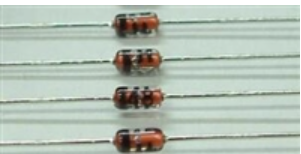Date:2025-07-10 Categories:Product knowledge Hits:374 From:Guangdong Youfeng Microelectronics Co., Ltd
In 1904, American scientist John Fleming discovered the phenomenon of hot electron emission, where electrons are emitted from a hot cathode to an anode. This laid the foundation for the development of diodes.
In 1906, British scientist Lee DeForest designed the first true diode, the vacuum diode. It consists of a hot cathode and a positively charged anode, which can achieve unidirectional conduction of current.
In 1947, Shockley and Bardeen from Bell Laboratories in the United States discovered the semiconductor diode effect, known as the PN junction diode. This has brought revolutionary changes to the development of diodes. A PN junction diode is composed of a P-type semiconductor and an N-type semiconductor, which can achieve more efficient current control.
In the 1950s, German scientist Hermann Schottky invented the metal semiconductor contact diode, also known as the Schottky diode. It is made of gold and has a lower turn-on voltage and faster switching speed compared to semiconductor materials.
Since the development of modern diode technology, various types of diodes have emerged, such as fast recovery diodes, Schottky barrier diodes, light-emitting diodes, etc. These diodes have been widely used in the field of electronics, driving the development of modern electronic technology. At present, switch diodes have become an indispensable component in electronic devices, making significant contributions to the development of modern technology.

Previous: Classification, Structure, and Principle of MOSFET